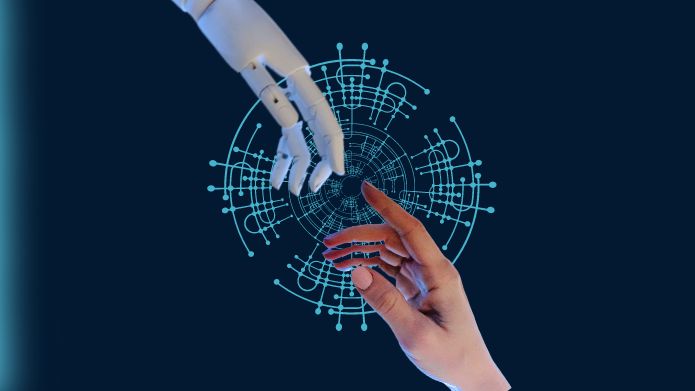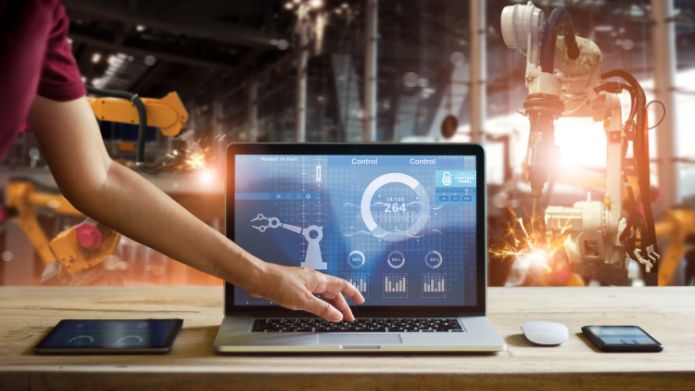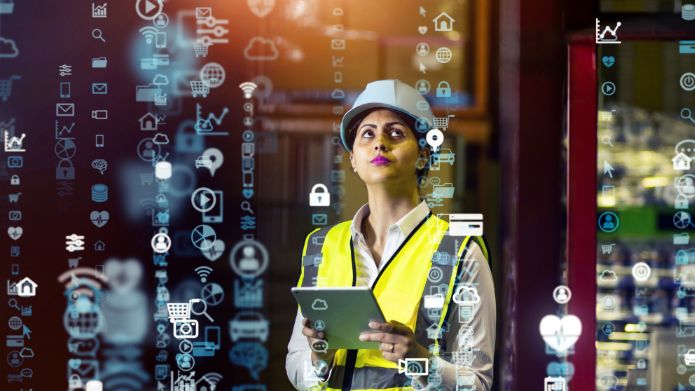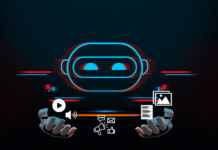Industry 4.0 is not a new term for many of us – this term has been circulating on the internet for a few years. The term was coined by Deloitte’s Center for Financial Research (CFR) in 2015 and has been used continuously since 2019. Many people started talking about what this new age, the digital industrial revolution is about and how it can affect us as consumers. In this article, we will discuss the evolution of the manufacturing industry and the impact of Industry 4.0 on the 21st Century. Let’s begin with a brief introduction to the term and the history of physical Industries.
What is Industry 4.0? Introduction and its roots
While the first industrial revolution was backed by water and steam, the fourth industrial revolution is more digitally powered. It is similar to the third in the way that the third revolution was driven by the age of computers. With AI and IoT becoming an integral part of systems, Industry 4.0 focuses on their application in the manufacturing process. Robotics, data, cloud, connectivity, and analytics are the major components of the industrial revolution.

Cyberphysical systems and smart manufacturing solutions are being introduced as a part of this revolution. The fifth revolution is expected to have planted its seeds already. It is predicted that the fifth revolution will bring humans and machines together and force workers to be more advanced and upskill themselves to operate robots and high-performance machinery. There will be more cooperation between machines and humans, but more on this later.
The First Industrial Revolution was a period from the early 19th century to the late 19th century when major new manufacturing technology was invented, improving efficiency and creating mass production. The first phase of the Industrial Revolution began with the mechanization of textile production in Britain during the 1780s and culminated in the development of steam power, which allowed for innovative growth in the industrial sector. Water, steam, human, and animal power drove the industry at that time.
The second phase of the Industrial Revolution saw the rise of mass production and assembly line techniques, which increased greatly after 1900. The introduction of electricity led to the setting of production lines.
The third phase of the Revolution was marked by a Great Depression between 1929–1933, which caused unemployment rates to rise significantly. However, it was the first time digital technology was accepted with the installment and use of computers. This was when the Information Age began.
4IR or the Fourth Industrial Revolution on the other hand is more innovation focussed than creating and simply manufacturing. It is allowing industries to add flexibility to the work processes and innovate systems to increase efficiency at the least cost possible. With the rise in demand and competition, it is becoming necessary for industries to produce goods that are complex enough to keep consumers engaged. Industry 4.0 thus allows them to analyze and assess consumer behaviors and needs and produce accordingly.
This is why consumers and data have become the biggest driving factor of this industrial revolution. With the multitude of data available to be explored and harnessed, it has become easier for manufacturers to give customers what they want.
Different technologies are aiding this change. Let’s talk about these.
Major technologies of Industry 4.0 |
|

1. Big Data and Analytics
Data is playing an integral part in this industrial revolution. Due to the availability of data, manufacturers can create consumer-friendly products. However, all the available data cannot be put into practice as it is. This is where big data and analytics come to play. Crucial data is categorized and sifted to extract useful data that can help make alterations in the processes. The information gathered is used to make viable improvements to the system.
2. IoT or Internet of Things
For the processes to work seamlessly, everything needs to be interconnected. Data, people, and machines need to work together to create efficient processes in the unit and apply the data analysis.
3. AI or Artificial Intelligence
AI not only enables connected work processes, helps gather data, and automates processes, but it also monitors the processes and predicts issues in real-time before they become grave. This helps optimize the processes further.
4. Cloud Computing
Cloud computing is an essential component to scale business processes. Analytics and data can be easily stored on the cloud and used by the team from anywhere, anytime. The accessibility of the data and the flexibility this system provides enables businesses to grow their production and manufacturing at a greater rate.
5. Cybersecurity
When the world went online, the need to protect its crucial and confidential data became essential, especially for businesses. Building bullet-proof walls and resilient protection systems enables industries to protect themselves against attacks and malpractices.
6. AR or Augmented Reality
Virtual Reality or Augmented Reality have been viewed as a consumer-based concept more than an industry one. However, the inculcation of AR into the systems allows workers to experience the processes in real-time. This ensures quality and makes the process more authentic for the people involved.
Smart manufacturing sectors and application
As per Grand View Research’s report, “The global smart manufacturing market was valued at USD 254.24 billion in 2022 and is anticipated to grow at a CAGR of 14.9% from 2023 to 2030.” This also means that major sectors have begun the adoption of 4IR into their systems and processes. Let’s talk about these sectors that are benefitting from this revolution.
The automotive sector has been using robotics to enhance production processes. Computer vision is also used to detect defects earlier in the process to reduce costs and major losses. This is, thus, increasing the value of production. Also, with the introduction of smart cars, it is safe to say that the application is not limited to the manufacturing process.
The energy sector is using big data to analyze energy usage and implement sustainable forms of energy. In the health sector, 3D bioprinting is helping produce tissues from biomaterials and cells that act as real tissues.
Many sectors might not have come to terms with the generative applications of Industry 4.0. The applications of this revolution are manifold and this is what we will look at.

- With the humungous amounts of data available in many forms, it will become difficult to distinguish the useful from the useless by a human being. Similarly assessing this much quantity of data will take more time and money. AI and big data analytics can identify patterns at a much faster rate and produce statistics that can be directly put to use. Once useful information is detected, it can be put to the test. This will save time and reduce the cost of the entire process.
- Automating supply chains will also be possible with 4IR. As a business will expand, the need to create a connected supply chain would increase. In order to not miss shipments and orders, supply chains will have to be optimized.
- Robotics is not a far-fetched dream anymore. With technological advancement, it will be easier to install robots to take over mundane production tasks and put the workers on valuable projects which would require incentive and collaboration.
- Not all information can be stored as digital or physical files in the system. Cloud thus can ease business processes by storing crucial data that can be accessed worldwide by the workforce.
- Predicting errors might not sound as crucial to the production process however considering the number of losses, error prediction through AI can save hundreds of dollars.
While there are sectors that have shown hesitancy in welcoming the 4IR, there are companies that are operating as smart manufacturing systems. For example, Johnson & Johnson DePuy Synthes – Ireland, Bosch Connected Factory – Blaichach – Germany, and many more have created an environment where machines and humans work together.
There is no doubt that machines and digital systems are much more efficient and accurate while performing certain tasks. Installing digital systems also saves time and increases productivity. When machines take up more mundane and simpler tasks, humans can help solve complex issues. Machines and humans working together can boost the efficiency of your unit. Additionally, when errors and problems are detected in the initial stages of production, a lot of money is saved. Moreover, to increase production, business owners will not have to increase their investment.
However, we cannot completely ignore the disadvantages that come with the 4IR system.
- The more the data, the more complications it brings. Businesses cannot expect to hit the bull’s eye with their data and analytics in one go. Proper input and application strategies are required for the data to work. Which brings me to my next point.
- There is a lack of the right talent to operate. Due to the sudden increase in tech advancements, there are fewer drivers than there are factories to be driven. Not everyone can handle the technologies thus the right people would be required to produce the desired results.
- A huge investment would be required in the initial stages of implementation of the technologies to reap the benefits later on.
- There would be a major dependency on technologies and operation without technologies, once applied, would become almost impossible.
There is a lot anyone can predict about this industrial revolution. Since 4IR is still evolving, there are more predictions than facts available in the market at this point. While the application processes are in progress, there are a lot of changes businesses and industry owners need to initiate such as hiring new talent to completely adapt to the revolution.
Read More:
















































